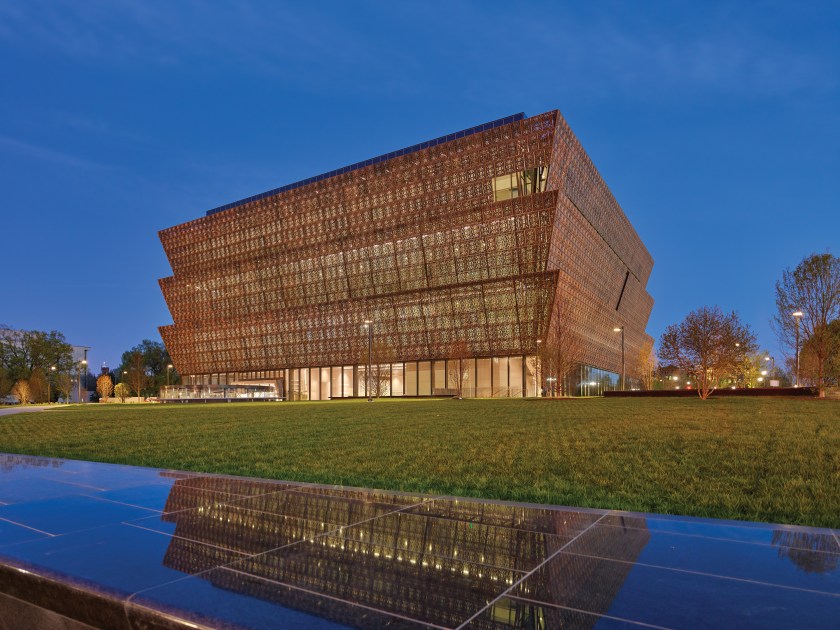When David Adjaye and his team were hired to design the National Museum of African American History and Culture (NMAAHC), the gravity of the task was immense. Not only did the group have to pay homage to the turbulent history of African Americans in a single structure, but it had to do so within the boundaries of strict regulation. Filling the last open plot on the National Mall, the designs for the NMAAHC had to make the most of its confined and coveted location.
The result is a building that is both home to a narrative, but also one itself. The NMAAHC’s exterior is a glass cube that intersects with three overlapping swaths of bronze aluminum, forming a thin outer layer. This outer skin, which Adjaye calls the “Corona,” has its roots in African art, with additional inspiration from Southern architecture. (Adjaye is said to have been the creative mind behind the Corona.) Its three-tiered shape was inspired by the Yoruban Caryatid, a shape found in art from western and southern regions in pre-colonial Africa.
“We…recognize that these African forms became incorporated into the classical architectural language,” the designer told Architectural Digest. “The Washington Monument, for example, is an obelisk, which is a form that made its way into the classical language from South Sudan and Nubia,” he continued. Inspired by the 19th-century ironwork done by enslaved craftsmen in New Orleans, Adjaye drew from the works of Philip Simmons, in particular, for the pattern of the Corona’s aluminum panels.
But, the rest of the NMAAHC and its interior is just as deliberate as its exterior. On D.C.’s Madison Drive lies “the Porch,” the other signature design element in the museum that serves as the below-ground level’s main entrance. In fact, 60 percent of the museum is underground. The NMAAHC is broken into three areas—culture, community, and history—with the latter residing on the lower levels. Because of the traumatic narrative being told, the underground spaces are designed to feel cavernous and dimly lit. From there, visitors move above ground towards the areas of the museum focused on community and culture.
These upper levels detail the contributions made by the African-American community to the rest of the world—from Little Richard’s music to the charter school movement led by Dr. Wyatt Tee Walker. The above-ground floors have framed views of the Washington Monument, the White House, and other Smithsonian museums along the Mall. Serving as a reminder that the museum presents a view of America through the lens of African-American history and culture, these windows provide respite and pause at selected moments along the exhibition experience. Visitors end their journey at the museum by passing through the Contemplative Court. With a raised oculus overhead streaming light through, the memorial area offers a quiet space for reflection with water and light.
The museum overcame design challenges to include specific artifacts, like the guard tower from Angola prison in Louisiana, that the architects literally had to design the museum around. Learn how the NMAAHC jumped those design hurdles and more in the video below. Underneath that, you can continue your visual tour of the museum’s main design elements.
This article was featured in the InsideHook newsletter. Sign up now.
